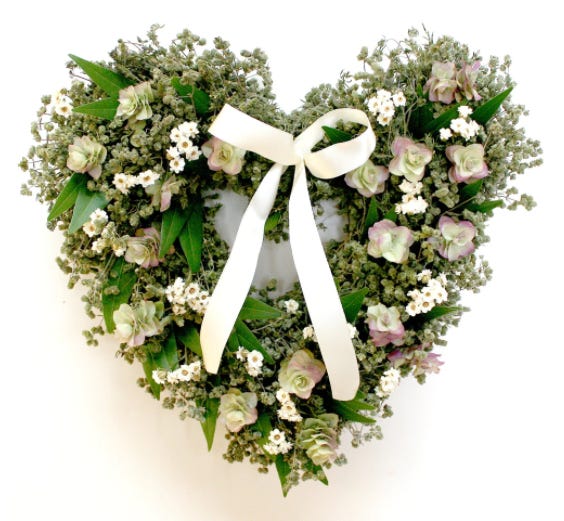
Let’s dive into my favored herbs for a cottage garden!
Herbs are the beating heart of the cottage garden. They offer fragrance, flavor, medicine, pollinator support, and a sense of timelessness. In this second installment of our Rooted in Charm series, we explore the essential herbs that no traditional—or modern—cottage garden should be without.
These herbs are drawn from tradition, confirmed by modern use, and celebrated in Cottage Gardens by Claire Masset. Let’s plant with purpose—and joy.
The cottage garden is more than a style—it’s a living memory of the way people used to grow food, make medicine, and surround themselves with beauty. Herbs formed the backbone of these spaces: practical, fragrant, and stunning in their quiet ways.
This second article in our Rooted in Charm series introduces a carefully curated set of herbs drawn from tradition. All are aligned with a cooler, softer palette—excluding hot reds, oranges, and harsh yellows to maintain your tranquil garden mood. In fact, that color rule becomes our first tenet.
Let’s meet the key players.
🌿 The Cottage Garden Herb Roster (A–Z)
1. Bee Balm (Monarda didyma)
Use: Tea, pollinators, symbolic
Growth: Upright, fragrant; choose pale or purple forms
Tip: Keep to cool-toned cultivars; attracts hummingbirds and bees
2. Borage (Borago officinalis)
Use: Edible blue flowers, cucumber-flavored leaves
Growth: Self-sowing annual, sprawling
Tip: Let it bloom among strawberries or near stone walls for softness
3. Chamomile (Chamaemelum nobile)
Use: Tea, calming remedy, lawn alternative
Growth: Low mat-former
Tip: Perfect for path edges or planting between stepping stones
4. Chives (Allium schoenoprasum)
Use: Culinary, edging, pollinators
Growth: Upright clump with purple flower globes
Tip: Companion plant for roses and carrots; a visual treat in bloom
5. Evening Primrose (Oenothera biennis)
Use: Seed oil, pollinator magnet
Growth: Tall biennial
Tip: Plant toward the back; look for pale yellow or cream cultivars
6. Fennel (Foeniculum vulgare)
Use: Edible fronds and seeds, swallowtail host
Growth: Tall and airy
Tip: Adds architectural interest—don’t plant near dill to avoid crossing
7. Feverfew (Tanacetum parthenium)
Use: Traditional remedy for headaches
Growth: Clumping with white daisy-like flowers
Tip: Use white or pale forms to maintain your color palette
8. Hyssop (Hyssopus officinalis)
Use: Tea, aromatic, bee plant
Growth: Compact and upright
Tip: Use sparingly—strong scent and flavor; lovely blue spikes
9. Lavender (Lavandula angustifolia)
Use: Drying, fragrance, pollinators
Growth: Rounded mounds
Tip: Choose ‘Hidcote’ or ‘Munstead’ for color harmony and hardy structure
10. Mint (Mentha spp.)
Use: Tea, garnish, cooling agent
Growth: Spreads aggressively
Tip: Contain in a sunk pot or stone-bordered niche
11. Rosemary (Rosmarinus officinalis)
Use: Culinary, memory herb
Growth: Woody perennial in warm zones; pot grown in cold climates
Tip: Position near the house for scent and easy harvesting
12. Sage (Salvia officinalis)
Use: Cooking, symbolic, bees
Growth: Shrubby, silvery foliage
Tip: Let flower to draw in pollinators—blooms in purple and pale blue
13. Thyme (Thymus vulgaris)
Use: Culinary, groundcover, antiseptic
Growth: Low mat-forming
Tip: Tuck into wall crevices or let trail over stones for classic effect
🧺 Bonus Tip: Combine for Utility and Beauty
Group herbs in threes—low, mid, tall—for a layered herb border. Interplant with cottage favorites like violas, and strawberries. Let some herbs bloom: they’re as good for the bees as they are for you.
Layer Suggested Herbs…
Ground layer —> Thyme, Chamomile, Chives, Feverfew
Mid-border —> Borage, Lavender, Sage, Hyssop
Back-border / tall —> Bee Balm, Fennel, Evening Primrose, Rosemary
🐝 Coming Next:
Building the Bones: Paths, Borders, and Garden Structures – A guide to shaping your garden with stone, wood, and rustic charm.
Until next time…
I am…
Phil Wilson…
And, here’s to living an Herbal Lifestyle With You!




Pop Quiz: What is the single important element in creating a rustic cottage or antique 18th century, or earlier, garden?
Answer: Use of only cool colors and no use of hot colors (red, orange, yellow). Or, place your hot colors in an area of your yard which is visually segregated.